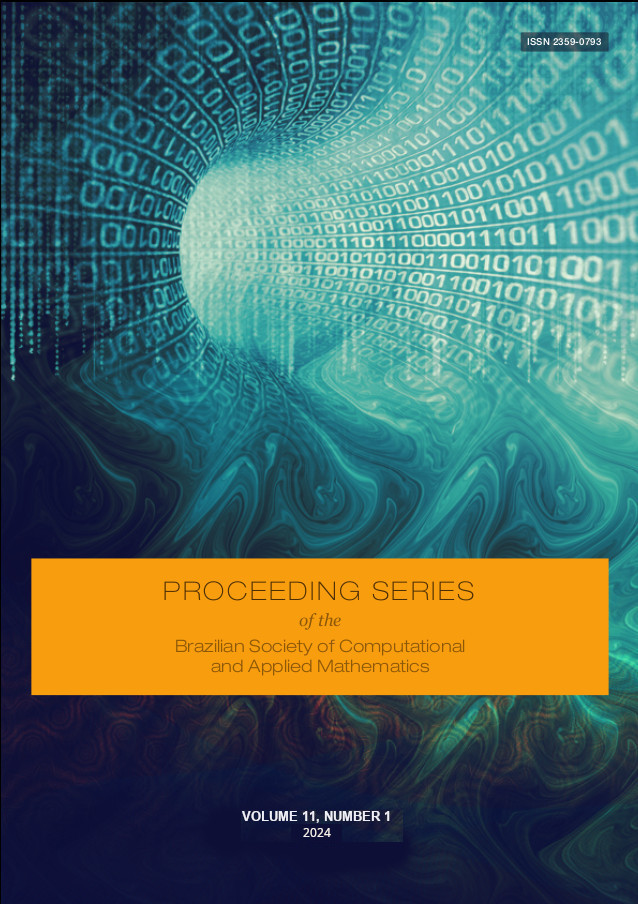Prediction of Significant Wave Heights by an Ensemble of Neural Networks
DOI:
https://doi.org/10.5540/03.2025.011.01.0459Palavras-chave:
Ocean Waves, Numerical Simulation, Neural Networks, Fluid DynamicsResumo
Due to the chaotic behaviour of the differential equations which model the problem of predicting ocean waves variables, a well-known strategy to overcome the difficulties is to run several simulations, varying the initial condition, and averaging the result of each, creating an ensemble. In recent years, with the increase in available data and computational power, machine learning algorithms have been applied as surrogates to traditional numerical models, yielding comparative or better results. This work presents a methodology to create an ensemble of different artificial neural network architectures, namely, MLP, RNN, LSTM, CNN, and a hybrid CNN-LSTM, aiming to predict significant wave height at five different locations on the Brazilian coast. The networks are trained using NOAA’s numerical reforecast data and target the residual between observational data and the numerical model output. A new strategy to create the training and target datasets is demonstrated. Results show that the framework is capable of producing highly efficient forecasts, with an average accuracy of 80%, and a significant reduction in computational cost.
Downloads
Referências
Martín A. et al. TensorFlow: Large-Scale Machine Learning on Heterogeneous Systems. Software available from www.tensorflow.org. 2015. url: https://www.tensorflow.org/.
R. M. Campos et al. “Improving NCEP’s global-scale wave ensemble averages using neural networks”. In: Ocean Modelling (2020), p. 101617.
R. M. Campos et al. “Nonlinear wave ensemble averaging in the Gulf of Mexico using neural networks”. In: Journal of Atmospheric and Oceanic Technology 36.1 (2019), pp. 113–127.
R.M. Campos et al. “Description and Validation of a new 20-year global wave ensemble reforecast data.” In: 3rd International Workshop on Waves, Storm Surges, and Coastal Hazards. October 1-6, 2023. University of Notre Dame, Indiana, USA. 2023. url: https://github.com/NOAA-EMC/gefswaves_reforecast.
F. Chollet et al. Keras. 2015. url: https://github.com/fchollet/keras.
L. Farina. “On ensemble prediction of ocean waves”. In: Tellus A: Dynamic Meteorology and Oceanography 54.2 (2002), pp. 148–158.
I. Goodfellow, Y. Bengio, and A. Courville. Deep learning. Vol. 1. MIT press Cambridge, 2016.
T.M. Hamill et al. “The Reanalysis for the Global Ensemble Forecast System, Version 12.” In: Monthly Weather Review. 150-1 (2022), pp. 59–79. url: https://registry.opendata.aws/noaa-gefs.
S. S. Haykin. Neural networks and learning machines. New York: Prentice Hall, 2009.
N. P. Juan and V. N. Valdecantos. “Review of the application of Artificial Neural Networks in ocean engineering”. In: Ocean Engineering 259 (2022), p. 111947.
G. J. Komen et al. Dynamics and modelling of ocean waves. Cambridge University Press, 1996.
F. C Minuzzi and L. Farina. “A deep learning approach to predict significant wave height using long short-term memory”. In: Ocean Modelling 181 (2023), p. 102151.
Brazilian Navy. PNBOIA - National Program of Buoys. Accessed on 12-04-2021. 2020. url: https://www.marinha.mil.br/chm/dados-do-goos-brasil/pnboia.
D. J. Peres et al. “Significant wave height record extension by neural networks and reanalysis wind data”. In: Ocean Modelling 94 (2015), pp. 128–140.

